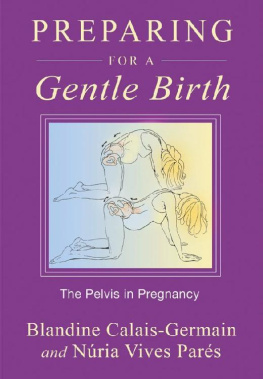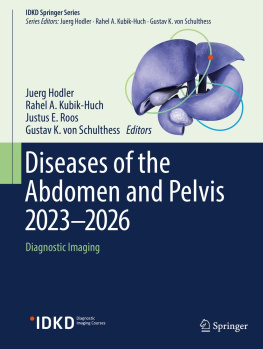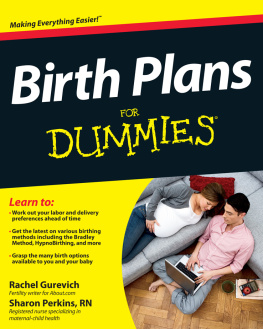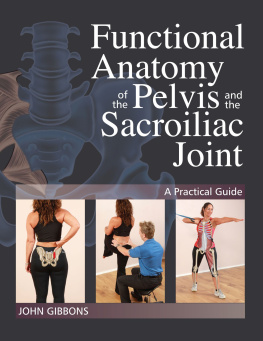

To our mothers, who accompanied us ...
and whom we have accompanied.
PREPARING
FOR A
Gentle Birth

Women are not often told how amazing their pelvises are, but this fact is extremely evident during the act of giving birth. Blandine Calais-Germain gives us a detailed understanding of the dynamic and cooperative process between the mother and the baby during which the pelvis moves and adjusts. Every millimeter of extra space that the pelvis can provide during this process is essential to a quick and easy birth. Every mother will benefit from learning the simple movements she can practice during pregnancy that help prepare her for giving birth. Every care provider will benefit from gaining a new respect for the simple and effective ways to facilitate the movement of the baby through the pelvis during childbirth. This book will become an essential text for every midwife, doctor, and doula. Calais-Germain illustrates beautifully that if you cant move the baby, simply move the mother and her pelvis.
BARBARA HARPER, R.N., MIDWIFE, DOULA, FOUNDER OF WATERBIRTH
INTERNATIONAL, AND AUTHOR OF GENTLE BIRTH CHOICES
Testimonials
Just after the workshop The Pelvis and Childbirth, I worked the night shift at a hospital. A young woman came to give birth, and she let us know that she wanted to have a natural childbirth.... She stayed almost the whole time on her hands and knees. I observed silently. I understood exactly what she was doing at all times. By herself, she tried to find all of the asymmetrical possibilities: nutation, contranutation, pronation, supination...
She gave birth to a lovely little girl of 7.7 pounds without an episiotomy or any medication.... Incredible!
I would like to thank you for this experience: being a witness to this birth more than made up for all of the caesarean sections and births that require medical intervention that we are inevitably obliged to participate in.
VIOLETTA NAVIO,
MIDWIFE, ALACANT, SPAIN
Wed like to thank you for the know-how that you bring to our everyday work; the discovery of the intrinsic movements of the pelvis. This allowed us to give priority to the autonomy of women in labor and to improve the obstetric outcome. For many years our profession ignored that the pelvis is mobile. Incorporating this concept into our practice helped us with very simple things like finding a position that facilitates the descent of the baby and the flexion of the fetuss head: all this by just taking into consideration the movement of the pelvis.
Position changes, the addition of a pliable support under the sacrum, and also the variety of possible positions on the new birthing bed serve to liberate the pelvis. All of these new strategies and tools have become common practice by our team of midwives; it improves the birth process and the satisfaction of the new mother.
Our team thanks you for increasing our knowledge. Wed also like to thank you on behalf of our patients who have benefited by this new approach.
THE MIDWIVES OF THE
DR. JOSEP TRUETA UNIVERSITY HOSPITAL OF GIRONA, SPAIN
CONTENTS
A NOTE TO DOCTORS, MIDWIVES, AND MOTHERS
Preparing for a Gentle Birth is not intended exclusively for those in the medical and paramedical professions; it is written for anyone who would like a better understanding of how the pelvis changes during childbirth. This may include pregnant women, anyone preparing to be of assistance during a womans labor, or anyone who is helping a woman prepare for labor.
We have chosen to use certain laymens terms in this book to allow it to remain accessible to as many readers as possible. For example, we often use the word belly to designate the abdomen. And weve chosen expressions such as lie down on your back or lie down on your side over dorsal or lateral decubitus. We have preserved international anatomical nomenclature when it is accessible. When it is not, we have chosen to use the word that is in current usage. For example, we use iliac bone in place of coxal bone.
This book covers eutocic deliveries (see ). This type of delivery assumes that the baby will present head first.
What This Book Does Not Cover
The book targets specifically the pelvis as it relates to the passage of the fetus and the movement that childbirth engenders. It does not cover movements of the pelvis with reference to the standing posture (weight distribution, curves...) or micromovements of the sacroiliac or restrictions caused by them.
We will not take an in-depth look at the pelvis as a site of the viscera, except to lightly touch on the abdominal organs of the lesser pelvis, or pelvis minor. In order to simplify the presentation, we do not cover the pelvic floor to any great extent.
While this book covers many pathologies or dystocia, it does not deal specifically with pathologies of the pelvis or diseases related to childbirth.
We present a variety of birthing positions, but the analysis of these positions focuses on how they affect the mobility of the pelvis. For the sake of simplification, we do not examine other important ramifications of these positions, such as their impact on respiration, on vascular compression, or on the relationship between the uterus and the diaphragm.
Attention!
All of the movements and manipulations presented in this book are descriptive and for the purpose of movement analysis. Those who undertake these movements and manipulations do so at their own risk.
FOREWORD
In Spain, as elsewhere, our way of understanding and addressing the act of childbirth is always in flux.
Driven by diverse factors, both social and scientific, the purpose of these changes is a search for balance between the quality and security of knowledge and modern-day techniques and the desire of a woman to be an active participant in the birth process. That is why it is necessary to revise the traditional preparations for childbirth by adopting new methods and practices that put the woman in the primary role for her best physical and psychological outcome.
From my point of view, through the perspective of change and innovation, this book makes an important contribution to improving our knowledge of movement in the womans body in preparation for childbirth. Based on observation of anatomical structures involved in childbirth and rigorous analysis, the focus of the authors is to give women (and couples) power over their own bodies and, at the same time, to offer an individual approach for every birthing experience.
This book, Preparing for a Gentle Birth, is the continuation of the work and research that Blandine Calais-Germain and Nria Vives Pars have been doing for several years.
Calais-Germain began her educational programs in 1980, culminating in the 1984 release of Anatomy of Movement, her central work, which went on to be published in eleven languages and has become a reference book for students of medicine, sports, dance, physical therapy, and other movement modalities. She has since published five complementary works based on movement as it relates to anatomy. In this book, Preparing for a Gentle Birth, she has collaborated with Nria Vives Pars, a teacher and psychomotrician who specializes in the instruction of sensory awareness, to develop methods for preparing for childbirth, reeducating the perineum, and preparing for menopause. These methods offer health care practitioners, especially midwives and massage therapists, the opportunity to reorient their work in the direction of active and creative teaching, which can be adapted for every woman.
Next page










